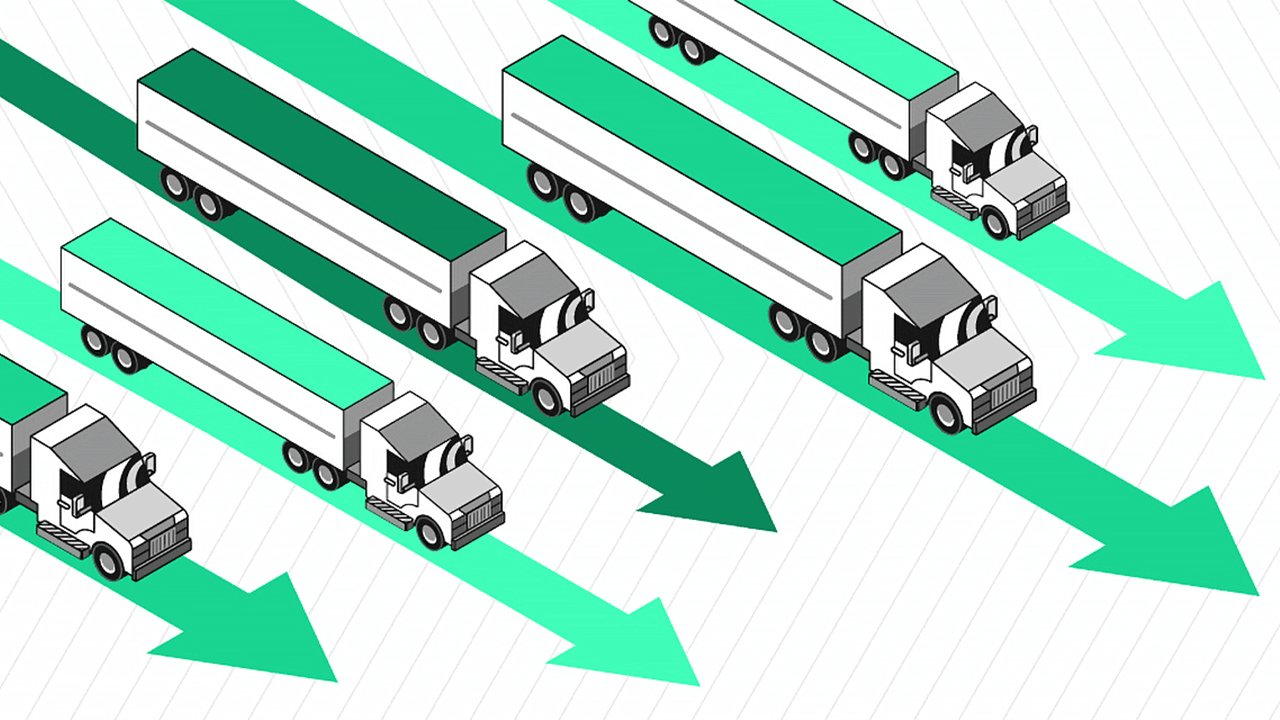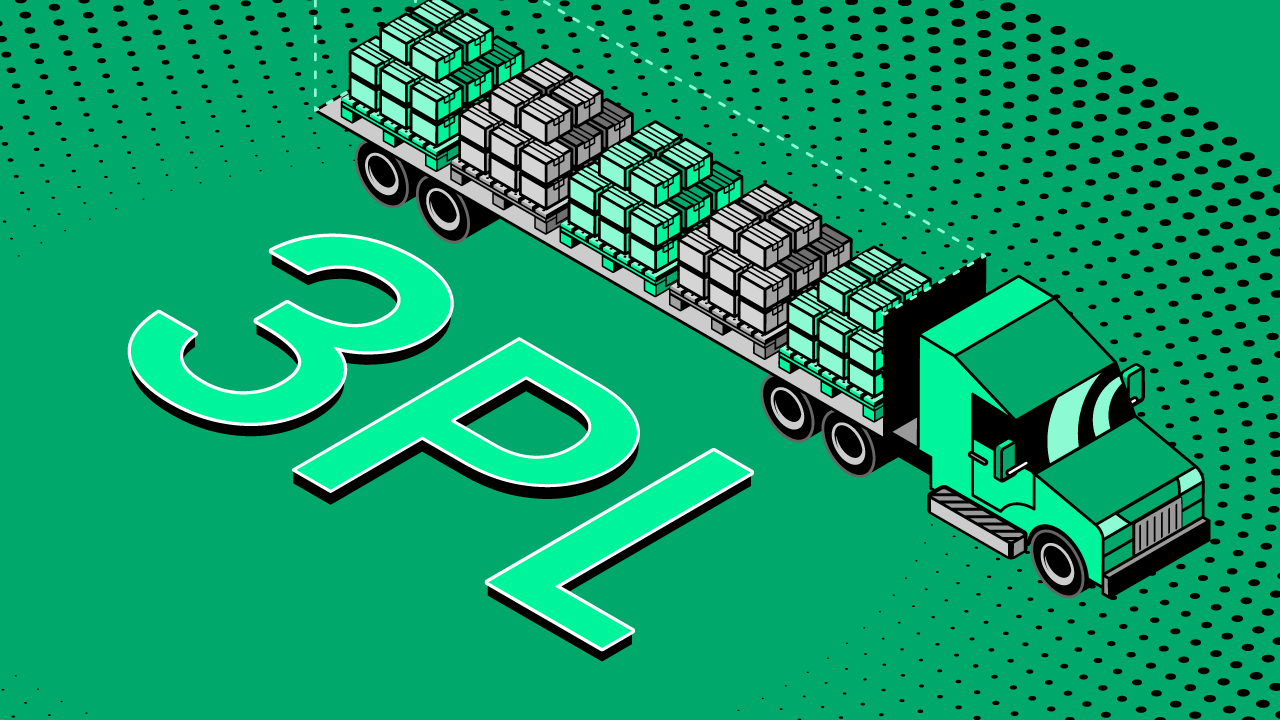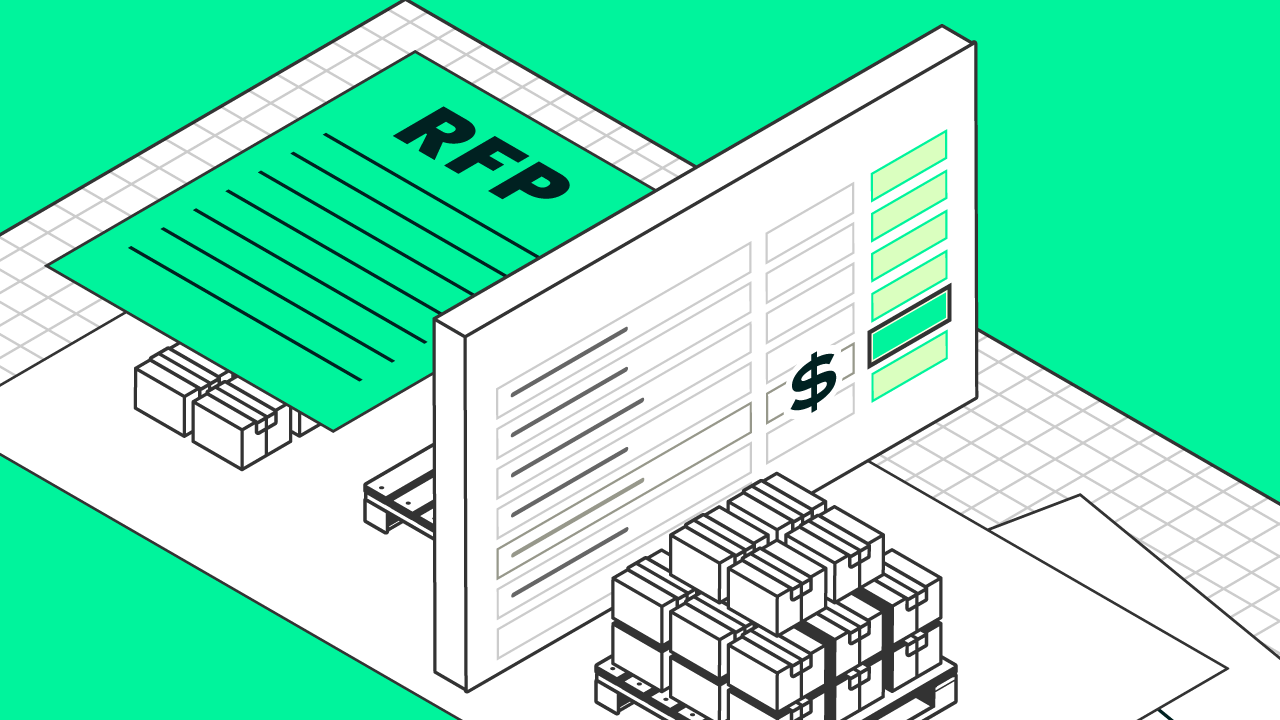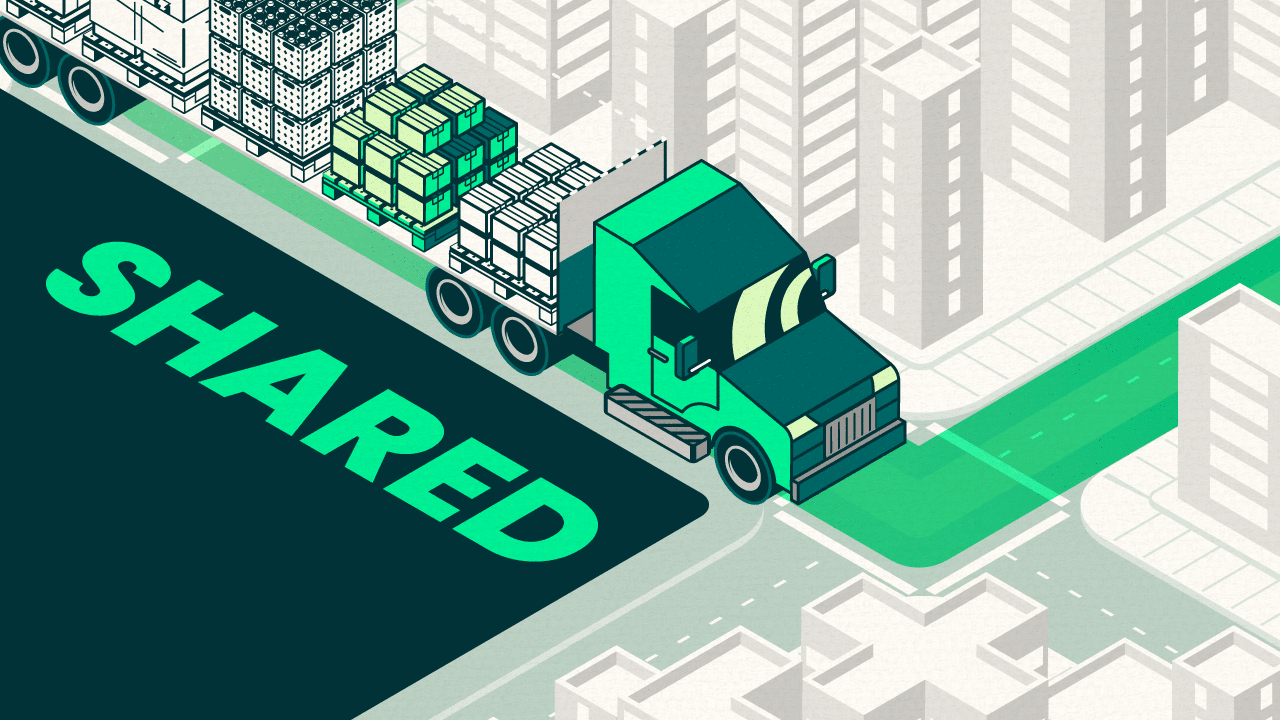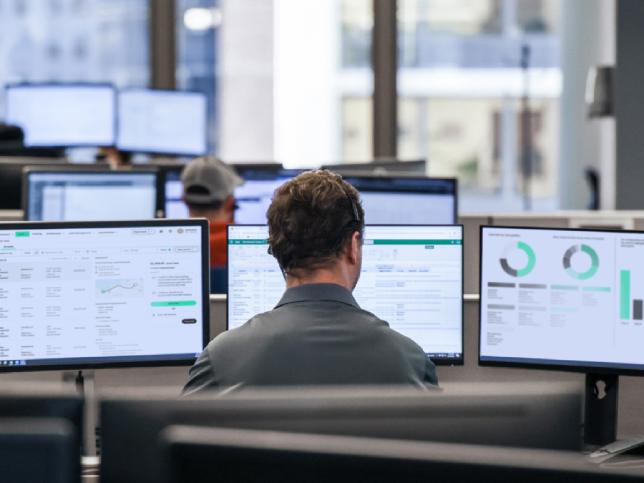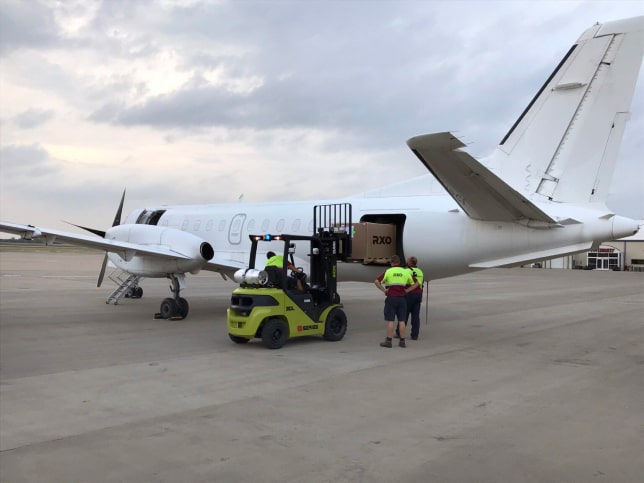Shipper
5 min read
Navigating Tariff Uncertainty & Trade Policy Shifts
The global trade landscape faces ongoing volatility, with the potential for significant shifts in trade policies and tariff structures.
3 min read
Navigating the Seas of Global Trade: Choosing a Reliable Provider for Ocean Freight Shipping
Get five tips for choosing a reliable provider for your ocean freight. Work with an NVOCC who understands customs and cares about optimizing your operations.
3 min read
Pool Point Shipping: Streamlining Your Retail Supply Chain
Pool point shipping, also known as pool distribution, is a strategic approach to freight management that consolidates multiple shipments destined for the same geographic region.
6 min read
Balancing Freight Cost & Service: 7 Ways to Get More Value With Your Transportation Spend
Working with an experienced, multi-modal logistics provider can help shippers control their freight costs and achieve long-term savings.
7 min read
Route This Way: 5 Tips for Getting the Most Out of Freight Routing Guides
Is your supply chain ready for a freight routing guide? How to make one and how to use technology to get the most out of it. Read 5 freight tendering tips.
3 min read
Dedicated Transportation Services: Optimizing Your Supply Chain for Success
Are you searching for dedicated transportation services that deliver more than just timely deliveries? In today’s competitive landscape, optimizing your supply chain is crucial for profitability and growth.
8 min read
How to Prepare for a Tight Capacity Market: 4 Steps Shippers Can Take
When spot rates rise and truckload capacity gets tighter, follow these 4 tips. Keep your freight moving in a tight capacity market.
10 min read
Shipper of Choice Do’s and Don’ts: 9 Best Practices to Improve Carrier Relationships
When freight market conditions get tighter, you'll want to stand out with carriers. Learn how to become a shipper of choice.
9 min read
What to Expect When You’re Expediting: 4 Expedited Truckload Shipping Tips
Learn what your options are for expedited truckload freight. Read 4 tips for ensuring a smooth expedited shipping experience.
13 min read
AB5 & the Trucking Industry: How This California Bill Could Impact Driver Capacity
Get an easy-to-digest overview of the California AB5, what it could mean for the trucking industry, & how drivers, owner-operators & carriers could be impacted.
6 min read
Avoid the 5 Risks of Cross-Border Mexico Freight Shipping (From Cargo Theft to Lengthy Delays)
Learn how to protect your shipments between Mexico & the U.S., from cargo theft to insurance, with these cross-border shipping best practices.
10 min read
Mexico Cross-Border Guide: How to Ship Truckload Freight Over the Southern Border
From paperwork to transloading, this step-by-step guide gives you everything you need to import & export cross-border Mexico truckload freight.
5 min read
Canadian Truckload Market: 8 Things Every Cross-Border Shipper Should Know
The U.S. and Canadian truckload markets are similar, but there are several key differences. Learn what they are & how to navigate the market with confidence.
6 min read
Canada vs. Mexico Cross-Border: 5 Differences Shippers Need to Know
While freight shipping is similar across North America, there are a few key differences between the Canada and Mexico cross-border truckload markets.
9 min read
Canada Cross-Border Guide: How to Ship Truckload Freight Over the Northern Border
From BOLs & customs invoices to importing & exporting, this step-by-step guide gives you everything you need to ship cross-border Canada truckload freight.
5 min read
What is Volume LTL? When & How to Use This Mode in Your Supply Chain
Have a larger shipment that's still too small for a full truckload? Volume LTL and partial truckload are great alternatives. Learn how and when to use them.
9 min read
Spot vs. Contract Rates: What’s the Difference in Truckload Freight Shipping?
Learn the differences between contract rates and spot rates in truckload freight shipping. Find out when shippers should look for contract rates.
8 min read
How to Handle 5 Common LTL Shipping Challenges (3PLs Can Help)
Learn about 5 LTL shipping challenges that most businesses face. Find out how experienced shippers avoid them (and how 3PLs can help).
5 min read
Complemento Carta Porte Explained: FAQ for Essential Mexico Freight Shipping Documents
Get answers to frequently asked questions about the Complemento Carta Porte, a new document required to improve security for freight shipped in Mexico.
7 min read
Build for Any Market Conditions: Tips for Creating a Resilient Supply Chain
Learn what resilient supply chains look like and how to strengthen yours. Ship confidently in any freight market conditions with these tips.
8 min read
The Small Business Guide to Logistics Technology: 5-Steps for Growing Shippers
Learn how small businesses choose and utilize logistics technologies. Follow our 5-step guide to find the right supply chain technology solution for you.
7 min read
Customs Broker Basics: What Cross-Border Shippers Need to Know
If you're shipping cross-border with Canada or Mexico, learn the basics of customs brokerage and how to and why you should work with a broker.
4 min read
The 5 Biggest Cross-Border Shipping Mistakes (Avoid These)
Importing and exporting freight to Canada and Mexico can be tricky. These cross-border shipping mistakes will cost you time and money. Learn to avoid them.
8 min read
CSP vs. Blanket Rates: How to Find the Right LTL Pricing for Your Freight
Learn the difference between customer-specific pricing and blanket rates for LTL shipping, and find out when CSP makes sense for your freight.
13 min read
The ABCs of LTL Accessorials: When, What & How to Avoid
Learn why accessorial fees are more common in LTL shipping, what some of the most frequent accessorials are and how to avoid them.
10 min read
The Art & Science of Supply Chain KPIs: Measuring Logistics Success
Get insights from original research on how to set, manage & use logistics KPIs in your supply chain strategy.
8 min read
Intermodal vs. Truckload: 4 Things Every Shipper Should Know
Know the four main differences between shipping freight intermodal vs. truckload and keep them in mind when you choose the right mode for you.
9 min read
Is Intermodal More Sustainable? Strategies and Resources for Improving Efficiency on the Rails
Learn how intermodal shipping can (and can't) improve your supply chain sustainability. Get connected to government and nonprofit sustainability resources.
9 min read
3 Types of Intermodal Pricing Every Shipper Should Know
Discover the different types of intermodal pricing, find out what goes into each rate and learn how a 3PL can help your intermodal business strategy.
10 min read
What Is Intermodal Shipping? A Beginner’s Guide to Moving Freight on the Rail
Learn the 3 parts of an intermodal shipment, the key benefits of moving intermodal freight and a comprehensive glossary of terms to know.
7 min read
A Tale of Two Markets: 53’ Domestic vs. 40’ International Intermodal Containers
Learn the differences between domestic and international intermodal containers. Find out how to access 20', 40', 45' and 53' containers for your freight.
8 min read
Crunch the Numbers: How to Get the Most Out of Your Supply Chain Data
Learn what kinds of data you can collect from your supply chain, how you can track and visualize it with technology, and how to make it actionable.
9 min read
Get the Perfect LTL Freight Quote: 6 Steps to Better Rates for Your Shipments
Want to get accurate LTL freight quotes for your shipments? Use these 6 best practices to get the best LTL freight rates every time.
8 min read
Why You Should Outsource Your Next Transportation RFP (& 4 Benefits You Can Expect)
Learn when to outsource transportation RFP management, how working with a 3PL can improve your supply chain procurement and how to sell it to your team.
7 min read
How to Get the Perfect Truckload Spot Rate: 8 Rules for Freight Quoting
Every shipper has to get spot quotes for their truckload freight. These do's and don'ts will help you get the best spot rate every time.
8 min read
So Long Spreadsheets! How to Choose a TMS That Eliminates Manual Shipping Processes
Learn what to look for in a freight platform, key transportation management system (TMS) features, and how to make the right choice for your shipping network.
7 min read
LTL vs. Full Truckload: 7 Key Differences that Every Shipper Should Know
Full truckload and less-than-truckload are similar modes of freight shipping, but all shippers should understand these 7 key differences between them.
7 min read
How Transportation Policy Impacts the Supply Chain: 4 Important Facts for Shippers & Carriers
Learn how U.S. government transportation policy impacts the supply chain. Know the difference between regulations & laws, plus how policy advocacy works.
6 min read
Freight Security 101: 5 Shipper Tips for Avoiding Cargo Theft
With cargo theft on the rise across supply chains, learn how you can bolster your freight security. Choosing the right broker & communicating openly can help.
7 min read
4 Benefits of Freight API Integration (& 3 Tips for Getting the Most Out of It)
Learn how and why to connect to your logistics provider's freight API. Find out signs it's time to integrate, how to get started and benefits you'll enjoy.
7 min read
Set a Last Mile Logistics Strategy That Delivers With This 4-Step Guide
Use this 4-step guide to improve your last mile logistics strategy. Learn about delivery options, service requirements, providers and how a 3PL can really help.
9 min read
Your Step-By-Step Project Freight Guide (Use This Checklist)
Learn about common shipping project scenarios, how to find capacity and how a 3PL can help. Use our checklist for the next time you have project freight.
6 min read
Stay Fresh: A Guide to Produce Season Shipping in the Truckload Market
Learn how produce shipping season impacts the truckload market regionally and nationally across the U.S. Prepare your supply chain for seasonal surges.
9 min read
What Is Private Fleet Trucking? How Shippers Use Private & Dedicated Fleets
Learn the difference between private fleets and dedicated fleets, why shippers use each, and how 3PLs can help.
9 min read
Never Run Empty: How to Start a Private Fleet Backhaul Program (and Why a 3PL Should Help)
Learn benefits of starting a backhaul program for your private fleet, how to find freight, details to keep in mind when getting started & how a 3PL can help.
8 min read
5 Tips for Choosing a Cross-Border Mexico Freight Provider: Service, CTPAT Security & More
Learn how to balance cost, service and security when choosing your cross-border carriers, including insight on CTPAT, procurement and operations.
9 min read
How to Ship Oversized Loads: Weigh Your Options for Heavy Haul Freight
Learn what freight qualifies as an oversized load, what permits and open deck equipment you need to move it, and how a 3PL can help.
9 min read
Build vs. Buy: Why, When & How to Outsource Your Supply Chain Operations
Learn the benefits of outsourcing some or all of your supply chain, when it's time to buy vs. build, and what functions are commonly outsourced.
8 min read
What is Outsourced Logistics? The Basics of the 3PL Market
What shippers need to know about outsourced logistics basics and the 3PL market, with insight from a logistics expert.
10 min read
Guide to Open Deck Trailers: Shipping With Flatbeds, Step Decks, Goosenecks & More
Learn about the flatbed carrier market, how to quote & ship open deck trailers, and equipment types including RGN, double-drop, step deck & more.
7 min read
Get Connected: 5 Reasons API Integration With Carriers Is Great for LTL Shippers
Find out how API & EDI integration can benefit LTL shippers. Learn 5 benefits you can see if you connect digitally with a carrier or 3PL.
11 min read
Crushing It: Handle LTL Freight Claims Like a Pro With These 8 Lessons
Learn why freight claims are more common in LTL shipping, what you can do to avoid them, how to handle them when they arise and how a 3PL can help.
10 min read
LTL Freight Class vs. NMFC Codes: What’s the Difference?
Find out how to determine freight density, LTL freight class, and NMFC codes when shipping LTL freight.
9 min read
Take a Load Off: 7 Reasons to Work With an LTL Freight Broker
Learn 7 reasons why an LTL freight broker's technology, expertise and carrier relationships can save you time, money and headaches.
10 min read
Building an LTL Carrier Network? Set Your Procurement Strategy With These 9 Tips
Learn what questions to ask LTL carriers during your next procurement event, tips for running a successful bid and how to manage your LTL carrier network.
6 min read
When to Trust the Experts: 4 Signs You Should Outsource Logistics KPIs
Learn how to recognize when your business might benefit from outsourced logistics and find out how outsourcing can improve your service and performance.
6 min read
Taking a Both/And Approach to Supply Chain Outsourcing
Learn why shippers prefer a mix of outsourced and in-house supply chain functions. Find out how to determine which functions to outsource to add the most value.
9 min read
How to Start a Continuous Improvement Program: 6 Simple Steps for Your Supply Chain
Learn how to cut costs, improve service and boost employee engagement by setting up a continuous improvement program in your supply chain.
7 min read
Supply Chain Network Optimization Explained: Tuning Up Your Transportation & More
Learn what supply chain network optimization actually means, what you can optimize, how consultants can help and tips for taking a data-driven approach.
8 min read
What Is Power Only Trucking? (& How 3PLs Combine it With Leased Trailers)
By separating the power unit (driver & truck) from the trailer, 3PLs create flexible shipping solutions using large networks and digital freight matching.
8 min read
Get to Know Your Drayage Carriers: How Containers Move to Ports & Intermodal Ramps
Find out what drayage carriers do to keep intermodal freight moving. Learn about the drayage market and how to get great service.
6 min read
What is a TMS? A Beginner’s Guide to Transportation Management Systems
Learn the key functions of a transportation management system or TMS, how it is different than a WMS, and how long it takes to implement.
6 min read
The Truth About Digital Freight Matching: 4 Things You Need in a DFM Provider
Learn the difference between traditional brokers and newer digital matchers (DFM), and how to choose the right provider for you.
9 min read
What Is a 3PL? The Beginner’s Guide to Third-Party Logistics
Everything you need to know about third-party logistics providers, including asset-based vs. non-asset-based, the basics of brokerage and when to use a 3PL.
10 min read
Know Your Modes: The 7 Ways to Ship Freight
Learn when to use full truckload, LTL, shared truckload, intermodal, box truck or sprinter van. Find out which shipping method is right for your freight.
6 min read
Transloading vs. Through-Trailer: How to Choose the Right Mexico Cross-Border Service for You
Learn the differences between transloading and through-trailer service at the U.S.-Mexico border and why transloading solutions are usually recommended.
8 min read
What Is Supply Chain Consulting? A Guide to Outsourcing Logistics Management Services
Learn all the ways supply chain consulting helps shippers improve their logistics performance and what to look for in a good supply chain consultant.
5 min read
Don’t Make These 3 Summer Shipping Mistakes: Take Temperature-Controlled Freight Seriously
Learn how poor temperature-controlled shipping strategy can lead to damaged or rejected freight. Avoid the 3 most common reefer shipping mistakes.
12 min read
Preparing for Your 2025 RFP? Here Are 7 Steps for a Better Transportation Bid
Follow these 7 steps to prepare for your next transportation network bid. Run a successful RFP and lock in service at a manageable rate.
5 min read
Shared Truckload Explained: When to Use It, How to Find It & Why It’s Worth the Effort
Learn how shared truckload shipping compares to full truckload and LTL, the benefits to using it, and how to get started with a 3PL.
12 min read
Reefer Trucking 101: Answers to 10 Essential Refrigerated Freight Questions
Learn the basics of refrigerated (reefer) trucking in this guide to shipping temperature-controlled freight. Read about reefer trailers & how to use them.
2 min read
API vs. EDI in Freight Management: What’s the Difference?
API and EDI integrations handle digital data transfers for supply chain professionals. Here are 4 reasons by APIs excel at quoting, tracking & load building.
14 min read
The 7 Different Types of LTL Carriers (& When to Use Each)
Learn the basics of the LTL market — including how to choose an LTL carrier and how working with a freight broker can benefit your business.
2 min read
The Power of Transportation Control Towers
As a centralized hub, a control tower offers end-to-end visibility of the entire transportation network. It acts as the nerve center for logistics operations to monitor and manage the entire transportation network, ensuring each component works harmoniously.
3 min read
Honoring Service and Supporting Success: RXO’s Commitment to Veterans
As Veterans Day approaches, RXO reaffirms its unwavering dedication to the military community.
3 min read
Mastering Supply Chain Resilience: Mitigating Risks in an Unpredictable World
The global supply chain is anything but predictable. Natural disasters, political instability, cyber threats, and ever-changing regulations create a volatile landscape for businesses.
2 min read
Warehousing: The Future of On-Demand Space and Logistics
In today’s rapidly changing market, the soaring demand for efficient and flexible warehousing solutions is pushing companies to find innovative methods to streamline supply chains, cut costs and enhance service levels.
2 min read
Air Expedite: Critical Solutions for Fast Freight Movement
Air expedite services have become a fundamental component of today's logistics sector, providing the necessary speed and flexibility to meet industry demands. These services enhance supply chain agility and flexibility, making them essential in logistics.
3 min read
Navigating Oversized Loads: Key Considerations for Choosing a Heavy Haul Provider
Heavy haul services play a pivotal role in today’s logistics, providing essential support for transporting oversized and overweight cargo.
2 min read
The Future of Freight Brokerage: Responsible AI in the Era of GenAI
The freight brokerage industry is on the cusp of a major transformation, driven by the power of Artificial Intelligence (AI).
2 min read
Ground Expedite: The Unsung Hero of Modern Supply Chains
Learn how ground expedite services are transforming supply chains in industries like pharmaceuticals and automotive.
2 min read
Finding the Right Flatbed Truck Provider
When looking for a flatbed provider, shippers should prioritize providers with proven expertise, robust connectivity and ample capacity.
2 min read
Choosing the Right Temperature-Controlled Trucking Provider for Summer Shipping
As we find ourselves at the heart of summer, temperatures are hitting their peak across North America. This presents unique challenges for shippers of temperature-sensitive goods, making the selection of a reliable and experienced temperature-controlled trucking provider crucial.
3 min read
Driving Success: Choosing a Managed Transportation Provider
Efficient transportation management is crucial for companies striving to optimize their supply chains. Understanding the nuances of managed transportation (MT) can significantly impact an organization’s bottom line.
3 min read
Navigating the LTL Landscape: Key Considerations for Shippers
Navigating the LTL landscape can be tricky for shippers, especially for those new to the game. Choosing the right LTL carrier is crucial for ensuring reliable, efficient, and cost-effective transportation of your goods.
2 min read
Innovative Beer Transportation Solutions: Navigating the Logistics Landscape
Beer makers are no strangers to the meticulous craftsmanship that goes into creating the perfect brew. A supply chain partner plays a crucial role in safeguarding that integrity throughout their journey to market.
2 min read
Overcoming the Challenges of Finding Reliable LTL Carriers: Your Guide to Secure, Efficient LTL Shipping
Choosing the right LTL carrier is crucial for ensuring reliable, efficient, and cost-effective transportation of your goods. But with a plethora of options available, the process can feel overwhelming.
2 min read
Building Trust and Transparency with AI Explainability in Logistics: A Deeper Dive
At RXO, we've implemented AI explainability tools for our internal operators, providing them with granular insights into our pricing algorithms.
4 min read
Leveraging RXO’s LTL Carrier Network: A Comprehensive Guide to Tailored Solutions
Finding the perfect LTL carrier for your business can feel like searching for a needle in a haystack. But with RXO’s extensive LTL carrier network, you have a powerful tool at your fingertips to streamline this process.
2 min read
Be Ready for CVSA International Roadcheck May 14-16 2024: Tips for Drivers, Carriers, and Shippers
The Commercial Vehicle Safety Alliance (CVSA) International Roadcheck is just around the corner, taking place from May 14-16, 2024.
2 min read
How Transportation Providers Can Bolster Shippers' Disaster Preparedness
Disasters strike without warning, leaving chaos in their wake. For shippers, these events can disrupt supply chains, jeopardize cargo and impact business continuity.
5 min read
5 Reasons Pool Distribution is Right for Your Business
If you’ve heard of pool distribution but are unsure if it’s the right “fit” for your company, these insights can help.
3 min read
Navigating the World of Bulk Transport
When transporting large-scale bulk good, shippers must weigh many factors with looking for the right transportation provider.
3 min read
Take the Stress out of Vehicle Shipping
To ensure a seamless customer experience, consider these 4 key points when finding a shipping provider.
6 min read
Creating an Adaptable Managed Transportation Solution With a Major North American OEM
This managed transportation case study involves a multinational automotive manufacturing corporation as a client.
4 min read
4 Ways to Ensure That Your Nearshoring Operations Run Smoothly
They are some key ways that shippers can improve their nearshoring strategies for a successful cross border experience.
5 min read
Capabilities of 3PLs Versus 4PLs
When outsourcing your logistics operations, many are faced with the option of a 3PL verses a 4PL solution offering
2 min read
Stay ahead of your supply chain disruptions
Ensure your supply chain has minimal disruptions with flexible transportation options
22 min read
10 Steps to Success when Shipping Air Cargo
Air transport efficiency begins with precise shipment information
4 min read
What is 3PL Managed Transportation?
A one-stop-shop created by experts to fit your business needs.
4 min read
4 Principles for a Lean Transportation Network
Lean companies create processes for operations that generate zero waste
4 min read
Benefits of a Transportation Control Tower
Effectively minimize delays and maximize impact of performance data
4 min read
Last Mile Logistics for Heavy Goods
The “final mile” — is the last leg of the shipping journey for a product
3 min read
Why a Regional Supply Chain Strategy Can Save You Time and Money
Regional strategies can unlock significant-cost savings, improved efficiencies
4 min read
Why Forward Stocking is Smart Inventory Management
A critical strategy for any business managing stock-levels close to customers
5 min read
5 Things to Look for in a Freight Forwarder
Determine your needs before selecting a partner based on experience and scope
5 min read
What is Air Charter Service?
The fastest possible option when something must reach its destination quickly
4 min read
Save Money Using Expedited Shipping Services
Why having a trusted Expedite partner to manage demand is critical




